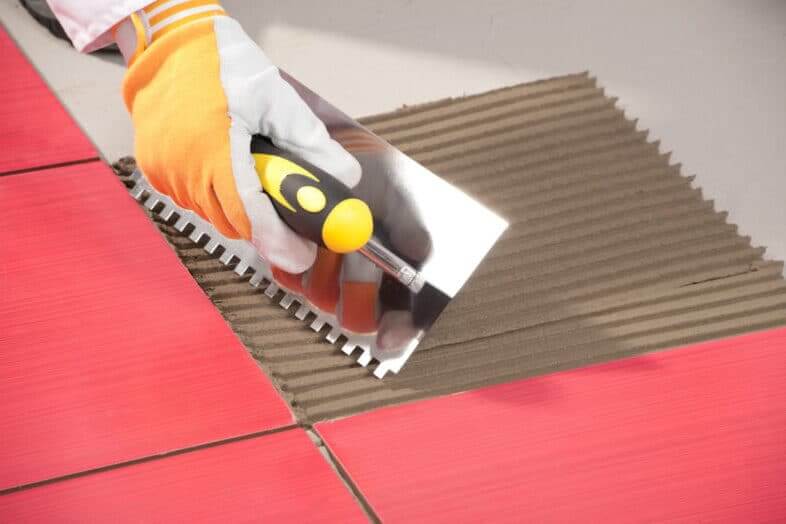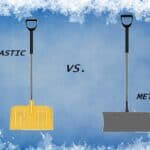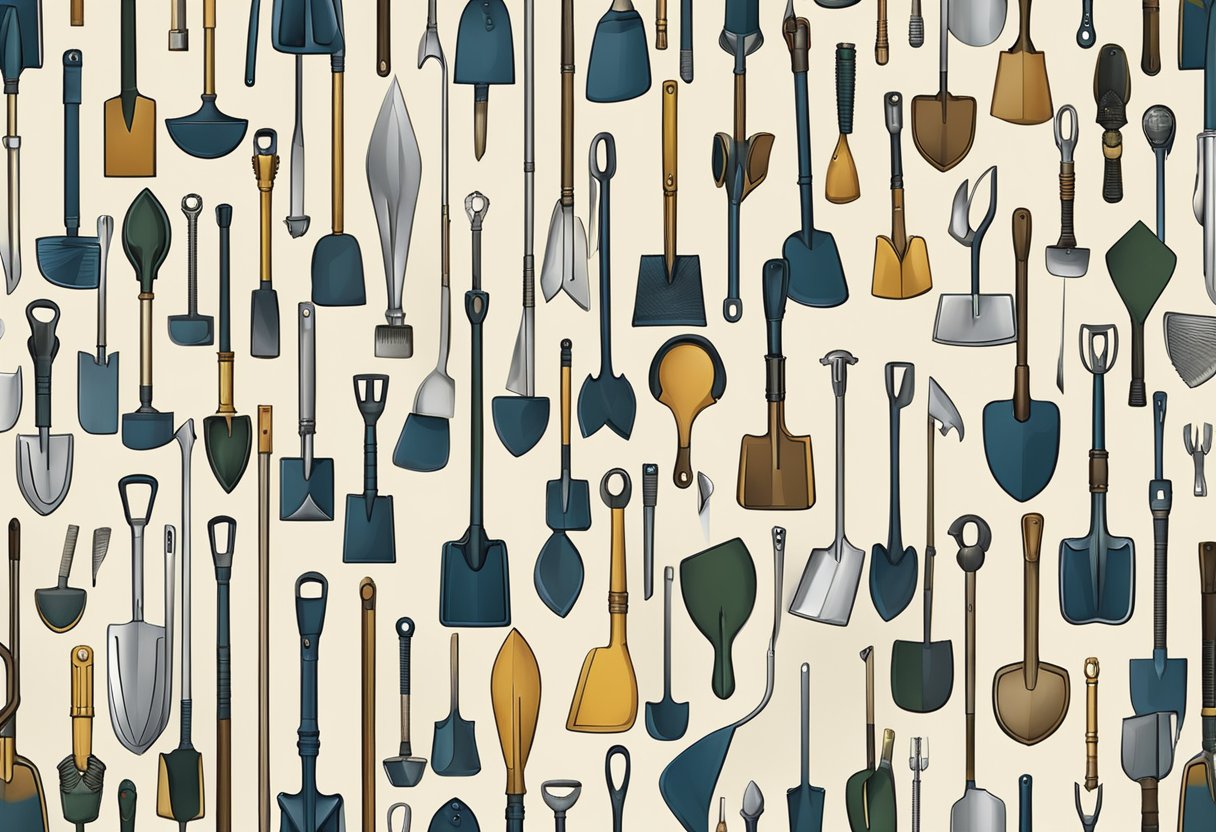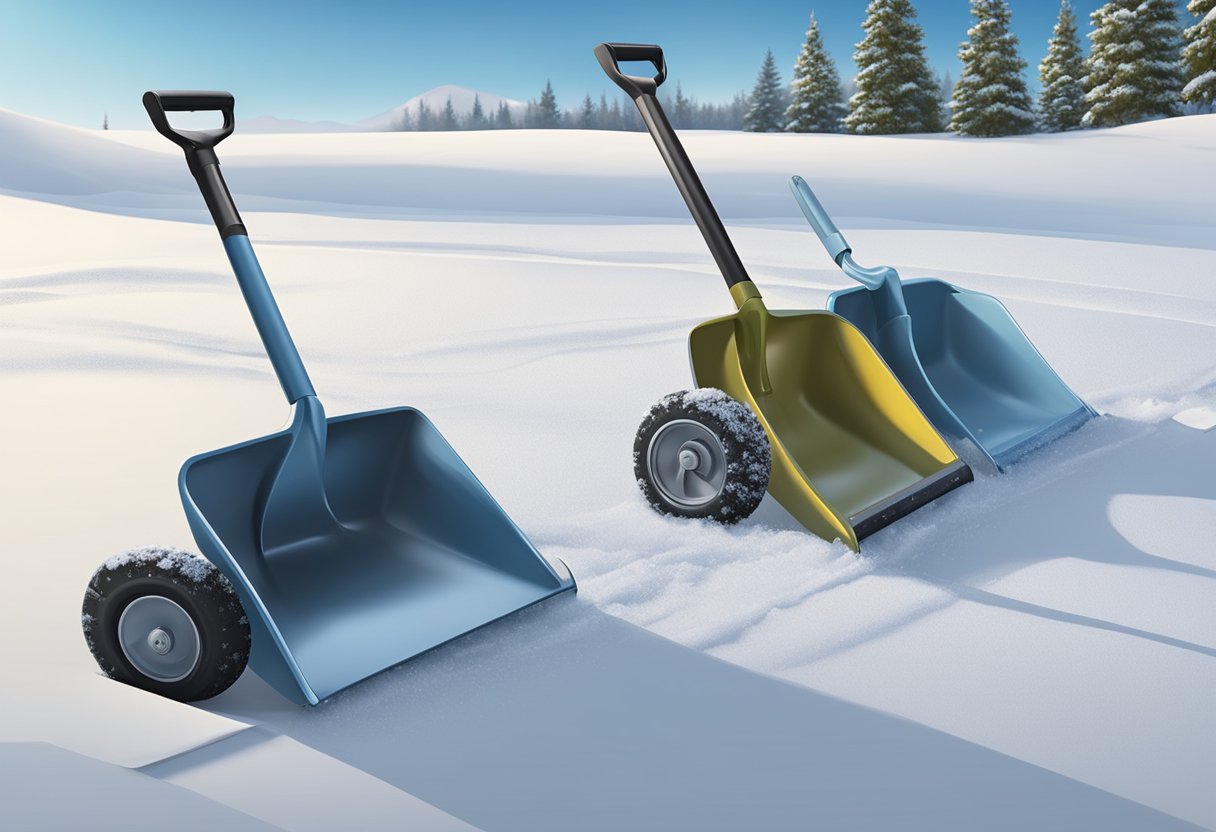The most common trowel types are finishing, drywall, curved, pattern, gauging, margin, garden, pointed, and notched trowels.
Each has a specific application in the construction industry, including laying wood and parquet flooring, plastering, cladding work, interior/exterior tiling, and exterior paving and block work.
Whenever you’re looking to get a job done right, it’s essential to have the right tools at hand.
So whether you’re spreading, scooping, combing, finishing, or leveling, there’s a trowel made explicitly for the job.
Table of Contents
Finishing Trowel
A finishing trowel is one of the most common trowels you’ll see in hardware stores.
A finishing trowel resembles a rectangle attached by a middle handle and measures around 12 inches by 4 inches.
However, longer trowel blades up to 20-inches long can be found are used in some finishing applications.
Finishing trowels are for surfaces such as plaster, stucco, and concrete.
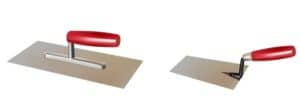
When used, they apply a smooth finish to the worked material, and master plasterers usually can get a finish good enough not to require any sanding before painting.
The blade of the finishing trowel needs to be smooth and free from defects to get an excellent finish, so it is made from stainless steel.
The steel will help prevent corrosion and pitting of the blade so that the finishers can achieve a flawless finish.
Drywall Trowel
A drywall trowel is similar in appearance to a finishing trowel and usually has a trowel blade around 4 inches wide and 12-18 inches long.
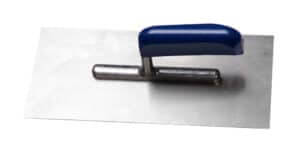
Drywall trowel blades are generally rectangular and made of tempered or stainless steel.
Other configurations of the trowel, such as the bullnose or pointing trowel, are different in shape and may also be called drywall trowels.
Drywall trowels apply drywall compounds to interior walls and ceilings.
Plastering tradespeople will often use a variety of drywall trowels to apply drywall compounds on different sections of a wall and ceiling.
Although drywall trowels are made from steel, just like finishing trowels, they are typically only used for drywall, and not used on concrete, as concrete scratches and degrades the blade.
Curved Trowel
Curved trowels have a trowel blade between 12-18 inches long and 4-6 inches wide.
They look similar in appearance to a drywall or finishing trowel.
However, the edge will have a slight convex curve lengthways along the blade, usually between 1-2 inches.
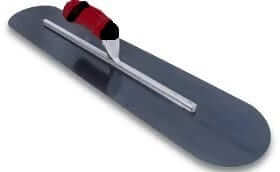
A curved trowel is a tool to apply bulk amounts of plaster or drywall compound or when multiple layers of compounds are required.
It is excellent for fanning out the mix, but it is not the tool of choice for the delicate tasks needed to finish work.
Pattern Trowel
A pattern trowel, also commonly known as a London, London wide, and Philadelphia trowel, has an elongated shaped blade made from tempered or stainless steel.
The blade’s width varies when manufactured, so the width may measure between 4-6 inches wide with an overall blade length of around 10 inches.
Pattern trowels are for laying bricks, although some trades use them for plastering, scooping, and applying render or drywall compounds.
A standard pattern trowel has curved edges on both sides, whereas a London pattern trowel has one straight side for picking up mortar and one curved side for cutting bricks.
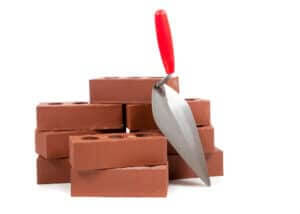
Gauging Trowel
A gauging trowel is a round-nose trowel with stainless steel or tempered steel blade that measures around 10 inches in length and around 4 inches wide.
The handle is attached to one end of the trowel, and the other end has a rounded nose with a radius of around 2 inches.
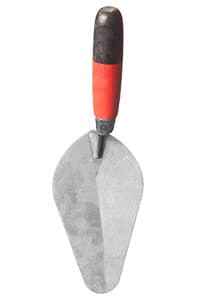
This trowel is typically used to apply or “gauge.”
Gauge is small amounts of material to specific areas.
The broad rounded point of the gauging trowel is ideal for picking plaster out of a bucket or wheelbarrow and is commonly used by plastering trades for applying plaster to walls or other surfaces.
Margin Trowel
A margin trowel is a small flat-nosed trowel with a long stainless steel blade of around 6-8 inches long and 2 inches wide.
Margin trowels are utilized to mix plaster, drywall compound, or even mortar for bricklaying.
Due to their smaller size, the margin trowel is ideal for use in more confined working areas where a larger trowel would not be suitable to apply smaller amounts of render, plaster, mortar, or drywall compound.
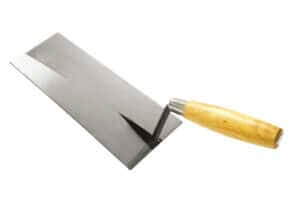
Garden Trowel
A garden trowel is quite different from the other trowels listed but as it is a trowel we placed this item in our list to show the difference.
This tool is usually made with toughened steel and is around 6-inches long with a scooped-shape blade and a handle at one end.
The blade tapers down to a soft point, and its intended use is for gardening applications.
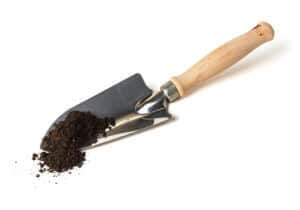
It is rare to see gardening trowels used by construction trades, and domestic gardeners and landscape gardeners more commonly use them.
Garden trowels dig or excavate small amounts of soil and are ideal for planting small plants.
Head over to our review of the 6 Best Garden Trowels for more information.
Pointed Trowel
A pointed trowel, also known as a pointer trowel or bricklayer’s trowel, has a long pointed blade that measures between 10-14 inches long.
The blade is around 4 inches wide near the handle and tapers down to a point at the end.
The handle will usually be made of wood or steel and clad with rubber or leather for comfort while in use.
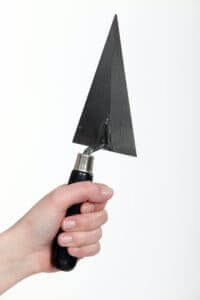
A pointed trowel is commonly used for bricklaying and spreads or shapes mortar on top of courses of bricks or blocks.
Smaller pointed trowels are also available and measure around 4-6 inches long and are about 2 inches wide with the same tapered point. T
hese are used specifically for pointing work, smoothing, and shaping the mortar in between blocks, known as ‘pointing.’
You may have heard the term pointing when someone has said to you, “Your chimney needs pointing.”
Pointing means that the mortar between your chimney bricks is cracked or worn and needs repairing or mortar applied to fix the chimney.
Notched Trowel
A notched trowel is around 12 inches long and 4 inches wide and has smooth flat edges on two sides and a notched edge on the other sides.
The versatile blade is used to spread, scoop, or combine different materials.
It is also commonly used to apply adhesives and mortars during wall, ceiling, or floor installations.
Notched trowels are commonly used in the construction industry across various trades, from laying wood and parquet flooring, plastering, cladding work, interior/exterior tiling to exterior paving and block work.
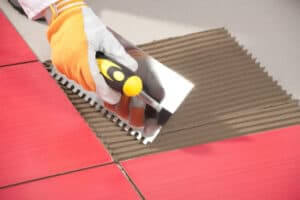
That brings us to an end of our overview of 9 Trowels and Their Use.
A trip to the hardware store searching for a trowel for a specific job can be confusing for inexperienced DIY’ers.
So, whether it’s spreading drywall compound or applying adhesive for wood flooring, there’s a trowel to suit your job and make life easier, and now you know what to look for!

